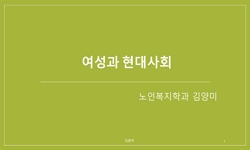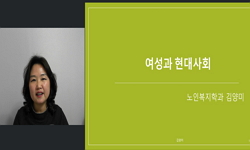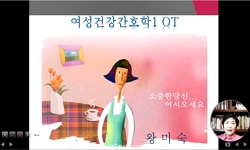As part of the work to analyze the concept of women in Colonial Korea, this paper investigates the usage of negative signifiers such as gyejib (bitch) and ‘old-fashioned woman’ in major magazines published during the first half of the 20th century...
http://chineseinput.net/에서 pinyin(병음)방식으로 중국어를 변환할 수 있습니다.
변환된 중국어를 복사하여 사용하시면 됩니다.
- 中文 을 입력하시려면 zhongwen을 입력하시고 space를누르시면됩니다.
- 北京 을 입력하시려면 beijing을 입력하시고 space를 누르시면 됩니다.

1920∼1930년대 식민지 조선의 여성 개념과 젠더 — 부정적 기표 ‘계집’과 구여성을 중심으로 — = The Concept of Women and Gender in Colonial Korea in the 1920s and 1930s ―Through the Negative Signifiers Gyejib and ‘Old-Fashioned Woman’
한글로보기부가정보
다국어 초록 (Multilingual Abstract)
As part of the work to analyze the concept of women in Colonial Korea, this paper investigates the usage of negative signifiers such as gyejib (bitch) and ‘old-fashioned woman’ in major magazines published during the first half of the 20th century, confirming that there was a reorganization of gender relations between the late 1920s and early 1930s. The most important change is that women not only appeared in the public sphere, but also claimed equality with men. In the public sphere, male intellectuals welcomed the emergence of this female role, seeing women as potential allies in the national or class liberation movements, but they also faced a serious challenge in deciding how to engage with these new women in their personal relationships. At the time, most of the men of colonial Korea lacked the economic power to support the new ideal family, which drove the discussion to extremes. ‘Young’ women were regarded as sexual objects and targets for men to possess, but this also created a representation of fallen women who corrupt men. In contrast, ‘learned’ women were seen in the context of a loving marriage, but were condemned as impertinent if they did not obey their husbands and as extravagant if they could not manage their household. In this period, the meaning of gyejib, which referred to a young woman, was narrowed to become an object of sexual desire, and the meaning of ‘old-fashioned woman’ had a positive connotation only when it was used to make new women accept the role of compliant spouse. During the late 1930s, gyejib came to mean a wife as a chattel possessed by her husband, demonstrating the failure of the new woman’s aspiration to be her husband’s equal. There were significant changes to the concept of women, as compared with the concept of men, reinforcing the usefulness of a ‘special’ as opposed to a ‘universal’ focus in the study of conceptual history.
국문 초록 (Abstract)
이 과정에서 젊은 여성을 가리키던 ‘계집’은 성적 대상을 비하하는 어휘로 전환되었고, 구여성은 신여성을 남성에게 순응하는 배우자이도록 제한하려는 의도에서만 긍정적으로 묘사되었다. 1930년대 후반 ‘계집’이 유흥업 종사자뿐 아니라 남편의 소유물이라는 의미에서 아내를 가리키게 된 현상은 가정 안팎에서 모두 남녀 관계를 성적으로 인식하게 되었다는 것, 그리고 가정 내에서는 아내가 남편과대등하기를 바라던 신여성들의 기획이 실패했다는 것을 의미한다. 이상과 같이근대 이후 남성 개념보다는 여성 개념이 논쟁의 중심에 서면서 시대 변화와 함께두드러지게 변화되었다
본고는 근대한국의 여성 개념을 분석하려는 작업의 일환으로, 20세기 전반에 간행된 주요 잡지들에서 ‘계집’과 구여성이라는 부정적 기표가 사용된 양상을 분석하였다. 그를 통해 1920년대...
본고는 근대한국의 여성 개념을 분석하려는 작업의 일환으로, 20세기 전반에 간행된 주요 잡지들에서 ‘계집’과 구여성이라는 부정적 기표가 사용된 양상을 분석하였다. 그를 통해 1920년대 후반부터 1930년대 초반에 걸쳐 여성 담론이 폭발하면서 긍정적인 것뿐 아니라 부정적인 여성 기표도 함께 증가한 배경에는 젠더관계의 재편이 있었음을 확인하였다. 가장 중요한 변화는 여성들이 공적 영역에등장했을 뿐 아니라 남성의 지배로부터도 해방되어 대등한 사람으로서 관계 맺기를 주장했다는 점이다. 지식인 남성들은 여성들도 민족 또는 계급해방운동에동참하기를 기대하면서 신여성의 등장을 환영했지만, 다른 한편으로는 사적 관계에서 자신이 이러한 새로운 여성들과 어떻게 관계를 맺어야 할 것인가 하는문제에 봉착했다. 이때 식민지 조선의 남성 대부분이 새로운 이상적 가정을 뒷받침할 수 있는 경제력이 없었다는 사실이 논의를 극단적으로 몰고 갔다. 성적 대상으로 치부된 ‘젊은’ 여성들은 남성을 유혹해서 타락시키는 존재이면서, 동시에남성들이 소유하고자 욕망하는 대상이 되었다. 또한 ‘배운’ 여성들은 연애결혼의상대로 설정되었지만, 남편에게 순종하지 않고 가난한 살림살이를 꾸려 내지 못하는 경우에는 조선의 현실에 맞지 않게 건방지고 사치를 부린다고 비난당했다.
이 과정에서 젊은 여성을 가리키던 ‘계집’은 성적 대상을 비하하는 어휘로 전환되었고, 구여성은 신여성을 남성에게 순응하는 배우자이도록 제한하려는 의도에서만 긍정적으로 묘사되었다. 1930년대 후반 ‘계집’이 유흥업 종사자뿐 아니라 남편의 소유물이라는 의미에서 아내를 가리키게 된 현상은 가정 안팎에서 모두 남녀 관계를 성적으로 인식하게 되었다는 것, 그리고 가정 내에서는 아내가 남편과대등하기를 바라던 신여성들의 기획이 실패했다는 것을 의미한다. 이상과 같이근대 이후 남성 개념보다는 여성 개념이 논쟁의 중심에 서면서 시대 변화와 함께두드러지게 변화되었다
참고문헌 (Reference)
1 손희정, "혐오 담론 7년" (93) : 20-49, 2018
2 박찬승, "한국 근대 정치사상사 연구" 역사비평사 1992
3 유창순, "이조 여성어 연구" 5 : 37-72, 1966
4 김수진, "신여성, 근대의 과잉" 소명출판 2009
5 김혜경, "식민지하 근대 가족의 형성과 젠더" 창비 2006
6 이정선, "근대 한국의 ‘여성’ 주체— 기표의 각축을 통해 본 일제시기 여성 개념 —" 한림과학원 (19) : 93-139, 2017
7 연세대학교 젠더연구소, "그런 남자는 없다" 오월의봄 2017
8 "국사편찬위원회 한국사데이터베이스"
9 이민우, "開化期 國語 女性 關聯 語彙의 槪念化 樣相 分析" 한국어문교육연구회 41 (41): 109-131, 2013
10 한림대학교 한림과학원, "『학지광』 코퍼스"
1 손희정, "혐오 담론 7년" (93) : 20-49, 2018
2 박찬승, "한국 근대 정치사상사 연구" 역사비평사 1992
3 유창순, "이조 여성어 연구" 5 : 37-72, 1966
4 김수진, "신여성, 근대의 과잉" 소명출판 2009
5 김혜경, "식민지하 근대 가족의 형성과 젠더" 창비 2006
6 이정선, "근대 한국의 ‘여성’ 주체— 기표의 각축을 통해 본 일제시기 여성 개념 —" 한림과학원 (19) : 93-139, 2017
7 연세대학교 젠더연구소, "그런 남자는 없다" 오월의봄 2017
8 "국사편찬위원회 한국사데이터베이스"
9 이민우, "開化期 國語 女性 關聯 語彙의 槪念化 樣相 分析" 한국어문교육연구회 41 (41): 109-131, 2013
10 한림대학교 한림과학원, "『학지광』 코퍼스"
11 Scott, Joan Wallach, "Feminism and History" Oxford University Press
12 한림대학교 한림과학원, "19종 잡지 코퍼스"
13 정지영, "1920-30년대 신여성과 ‘첩/제이부인’: 식민지근대 자유연애결혼의 결렬과 신여성의 행위성" 한국여성학회 22 (22): 47-84, 2006
동일학술지(권/호) 다른 논문
-
한국 근대 초기 ‘주부’ 개념의 도입 양상— 1900∼1910년대를 중심으로 —
- 한림대학교 한림과학원
- 이영아
- 2018
- KCI등재
-
한국 근대전환기 ‘신분’(身分)·‘신분제’(身分制) 용어의 성립과 변천
- 한림대학교 한림과학원
- 백광열
- 2018
- KCI등재
-
메이지 일본의 ‘양처현모’론 탄생의 맥락— 도쿠가와시대 여성 담론으로부터의 연속과 단절 —
- 한림대학교 한림과학원
- 이새봄
- 2018
- KCI등재
-
- 한림대학교 한림과학원
- 손민석
- 2018
- KCI등재
분석정보
인용정보 인용지수 설명보기
학술지 이력
| 연월일 | 이력구분 | 이력상세 | 등재구분 |
|---|---|---|---|
| 2027 | 평가예정 | 재인증평가 신청대상 (재인증) | |
| 2021-01-01 | 평가 | 등재학술지 유지 (재인증) |  |
| 2018-01-01 | 평가 | 등재학술지 유지 (등재유지) |  |
| 2015-01-01 | 평가 | 등재학술지 선정 (계속평가) |  |
| 2013-01-01 | 평가 | 등재후보학술지 유지 (등재후보1차) |  |
| 2011-01-01 | 평가 | 등재후보학술지 선정 (신규평가) |  |
학술지 인용정보
| 기준연도 | WOS-KCI 통합IF(2년) | KCIF(2년) | KCIF(3년) |
|---|---|---|---|
| 2016 | 0.53 | 0.53 | 0.68 |
| KCIF(4년) | KCIF(5년) | 중심성지수(3년) | 즉시성지수 |
| 0.66 | 0.6 | 1.426 | 0.08 |




 KCI
KCI KISS
KISS






